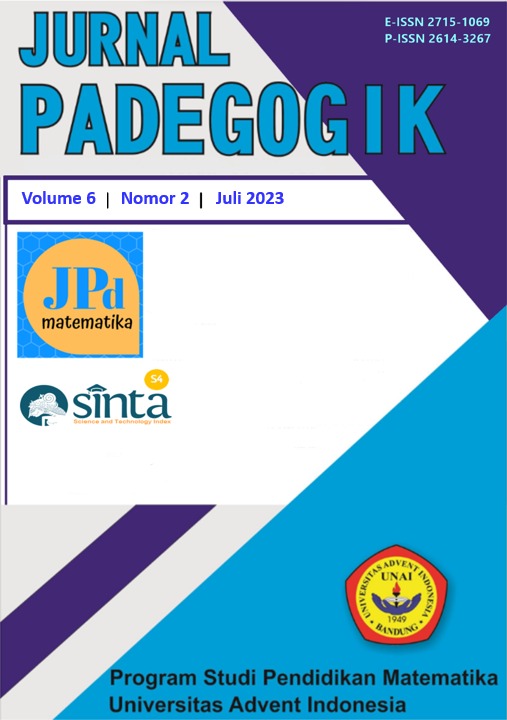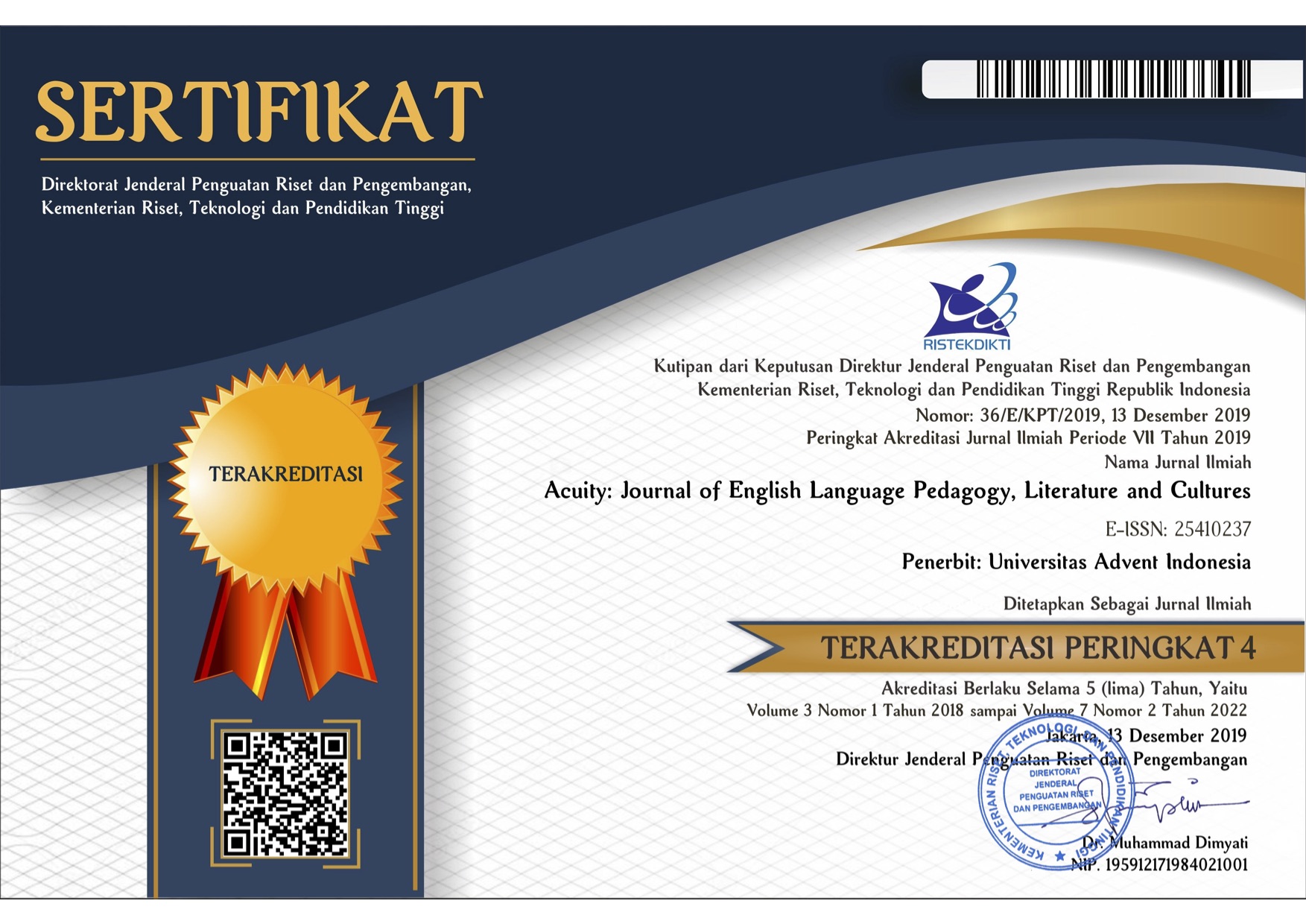Trek Kaleci The Use of Trek Kaleci Media to Improve Students' Numeracy Concept Ability
Keywords:
media pembelajaran, trek kaleci, kemampuan, konsep berhitung, matematika, Kemampuan Konsep Berhitung, perkalian dan pembagian, Trek Kaleci, Media Pembelajaran.Abstract
The background of this research is the results of the repetition of mathematics lessons in class III students at SDN 4 Cigedug at the end of semester 1 of the 2021/2022 academic year. Only 55% of grade III students whose grades exceed the KKM. The lack of ability to understand the concept of multiplication and division in students is one of the factors in obtaining these scores. The use of instructional media is expected to be able to improve students' ability to understand mathematical concepts, one of which is the kaleci track. Trek kaleci is a mix between Trek (racing track) and kaleci (marbles). Trek Kaleci is also an acronym for Math Practice using Kaleci. The purpose of this study was to analyze the improvement of students' numeracy concept skills through the use of the Kalali Track learning media on multiplication and division of simple numbers. This study uses a qualitative method, with research instruments in the form of essay tests and interviews with an orientation towards improving students' numeracy concept abilities and the use of Trek Kaleci media. Grade III students at SDN 4 Cigedug are the sample used in this study. Based on the results of the analysis, the average value of students' numeracy concept ability was 9.2 out of 12, with a percentage of 76%. Then based on the results of the questionnaire analysis interviewing students, a positive response was received with a percentage of 91% of students enjoying learning mathematics using Trek Kaleci.
Downloads
References
Alan, U. F., & Afriansyah, E. A. (2017). Kemampuan Pemahaman Matematis Siswa Melalui Model Pembelajaran Auditory Intellectualy Repetition dan Problem Based Learning. Jurnal Pendidikan Matematika, 11(1), 68–78.
Amin, dkk. (2022). 164 Model Pembelajaran Kontemporer. Jakarta; Pusat Penerbitan LPPM
Arikunto, S. (2006). Prosedur Penelitian Suatu Pendekatan Praktik. Jakarta: PT. Asdi Mahasatya.
Artmanda W. (2004). Kamus Lengkap Bahasa Indonesia. Bandung: Lintas Media.
Conny Semiawan, dkk. (1984). Memupuk Bakat dan Kreativitas Siswa Sekolah Menengah: Petunjuk Bagi Guru dan Orang Tua, Jakarta: PT Gramedia.
Dewantara. (1961). Karya Ki Hadjar Dewantara: Nagian Pertama, Pendidikan. Yogyakarta: Majelis Luhur Taman Siswa.
Eliyawati, C., dkk. Pemilihan dan Pengembangan Sumber Belajar untuk Anak Usia Dini, Jakarta: Dikti Depdiknas, 2005
Herman Hudoyo. (2003). Pengembangan Kurikulum dan Pembelajaran Matematika. Malang: Universitas Negeri Malang.
Kamus Besar Bahasa Indonesia, Tim Penyusun Kamus Pusat Pembinaan Dan Pengembagan Bahasa Departemen Pendidikan dan Kebudayaan, Jakarta: Balai Pustaka, 1990.
Moleong, L. (2011). Metode Penelitian Kualitatif. Remaja Rosdakaya.
Montolalu, B.E.F, dkk. 2008. Bermain dan Permainan Anak. Jakarta: Universitas terbuka.
Mustayrifah, I. (2021) Media Pembelajaran Matematika. Aceh: Yayasan Penerbit Muhammad Zaini
Hamalik, O. (2016). Proses Belajar Mengajar. Jakarta: Bumi Aksara.
Ruseffendi, E.T. (1991). Penilaian Pendidikan dan Hasil Belajar Siswa khususnya dalam Pengajaran Matematika untuk Guru dan Calon Guru.Bandung: Tarsito
Robert Bodgan, Steven J. Taylor, Kualitatif, Dasar-dasar Penelitian, Surabaya: Usaha Nasional, 1993
Sagala, S. (2011). Konsep dan Makna Pembelajaran. Bandung: Alfabeta.
Simarmata, Jenner dan Ronal Watrianthos (eds). Konsep dan Strategi Pembelajaran. Medan: Yayasan Kita Menulis
Sugiyono. (2018). Metode Penelitian Kuantitatif, Kualitatif, dan R&D. Bandung: Alfabeta
Sumartini, T.S., (2016).Peningkatan Kemampuan Pemecahan Masalah Matematis Siswa melalui Pembelajaran Berbasis Masalah. Jurnal Pendidikan Matematika STKIP Garut.
Sundayana. (2013). Media dan Alat Perada dalam Pembelajaran Matematika. Bandung: Alfabeta
Munadi, Y (2008) Media Pembelajaran Sebuah Pendekatan Baru, Jakarta: Gaung Persada Press.

Downloads
Published
How to Cite
Issue
Section
License
Copyright (c) 2023 Jurnal Padegogik

This work is licensed under a Creative Commons Attribution-NonCommercial-ShareAlike 4.0 International License.
The submitting author warrants that
- The submission is original and that she/he is the author of the submission together with the named co-authors; to the extend the submission incorporates text passages, figures, data, or other material from the work of others, the submitting author has obtained any necessary permission.
- Articles in this journal are published under the Creative Commons Share-Alike Attribution Licence (CC-BY-SA What does this mean?). This is to get more legal certainty about what readers can do with published articles, and thus a wider dissemination and archiving, which in turn makes publishing with this journal more valuable for you, the authors.
- By submitting an article the author grants to this journal the non-exclusive right to publish it. The author retains the copyright and the publishing rights for his article without any restrictions.







